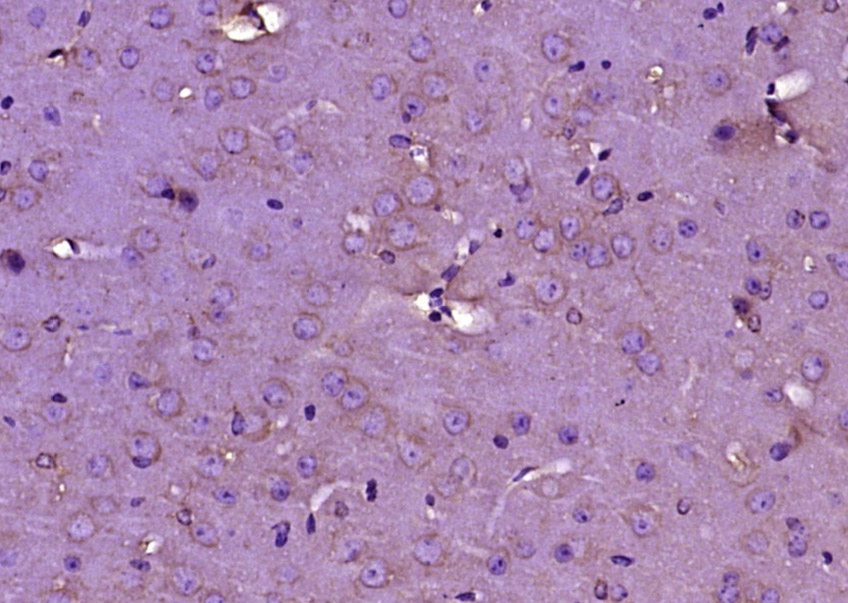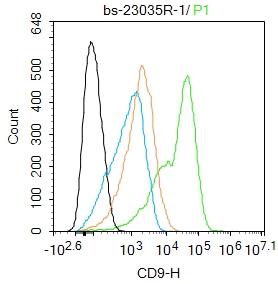
Rabbit Anti-CD9 antibody
Tetraspanin 29; 5H9; 5H9 antigen; Antigen defined by monoclonal; 602 29; Antigen defined by monoclonal; 60229; BA 2; BA2; BTCC 1; BTCC1; CD 9; CD9; CD9 antigen; CD9 antigen p24; CD9 molecule; CD9_HUMAN; Cell growth inhibiting gene 2 protein; Cell growth-i
View History [Clear]
Details
Product Name CD9 Chinese Name CD9蛋白抗体 Alias Tetraspanin 29; 5H9; 5H9 antigen; Antigen defined by monoclonal; 602 29; Antigen defined by monoclonal; 60229; BA 2; BA2; BTCC 1; BTCC1; CD 9; CD9; CD9 antigen; CD9 antigen p24; CD9 molecule; CD9_HUMAN; Cell growth inhibiting gene 2 protein; Cell growth-inhibiting gene 2 protein; DRAP 27; DRAP27; GIG 2; GIG2; Growth inhibiting gene 2 protein; Leukocyte antigen MIC3; MIC 3; MIC3; Motility related protein; Motility-related protein; MRP 1; MRP-1; MRP1; p24; P24; p24 antigen; Tetraspanin 29; Tetraspanin-29; Tetraspanin29; Tspan 29; Tspan-29; Tspan29. literatures Research Area Tumour Cell biology immunology Developmental biology Cell Surface Molecule Immunogen Species Rabbit Clonality Polyclonal React Species Human, (predicted: Mouse, Rat, Cow, Rabbit, Sheep, ) Applications ELISA=1:5000-10000 IHC-P=1:100-500 IHC-F=1:100-500 Flow-Cyt=1ug/Test IF=1:100-500 (Paraffin sections need antigen repair)
not yet tested in other applications.
optimal dilutions/concentrations should be determined by the end user.Theoretical molecular weight 25kDa Cellular localization The cell membrane Form Liquid Concentration 1mg/ml immunogen KLH conjugated synthetic peptide derived from human CD9: 101-200/228 <Extracellular> Lsotype IgG Purification affinity purified by Protein A Buffer Solution 0.01M TBS(pH7.4) with 1% BSA, 0.03% Proclin300 and 50% Glycerol. Storage Shipped at 4℃. Store at -20 °C for one year. Avoid repeated freeze/thaw cycles. Attention This product as supplied is intended for research use only, not for use in human, therapeutic or diagnostic applications. PubMed PubMed Product Detail CD9 antigen is a glycoprotein expressed on the surface of developing B lymphocytes, platelets, monocytes, eosinophils, basophil, stimulated T lymphocytes and by neurons and glial cells in the peripheral nervous system. It belongs to a family of membrane proteins termed tetraspanins which transverse the membrane four times. In pre B cells and platelets, CD9 antigen regulates cell activation and aggregation possibly through an association with the integrin CD41 / CD61 (GPIIb / GPIIIa). It also regulates cell motility in a variety of cell lines, and appears to be an important regulator of Schwann cell behaviour in peripheral nerve.
Function:
Involved in platelet activation and aggregation. Regulates paranodal junction formation. Involved in cell adhesion, cell motility and tumor metastasis. Required for sperm-egg fusion.
Subunit:
Forms both disulfide-linked homodimers and higher homooligomers as well as heterooligomers with other members of the tetraspanin family. Associates with CR2/CD21 and with PTGFRN/CD9P1. Interacts directly with IGSF8.
Subcellular Location:
Membrane; Multi-pass membrane protein.
Tissue Specificity:
Expressed by a variety of hematopoietic and epithelial cells.
Post-translational modifications:
Protein exists in three forms with molecular masses between 22 and 27 kDa, and is known to carry covalently linked fatty acids.
Similarity:
Belongs to the tetraspanin (TM4SF) family.
SWISS:
P21926
Gene ID:
928
Database links:Entrez Gene: 928 Human
Entrez Gene: 12527 Mouse
Omim: 143030 Human
SwissProt: P21926 Human
SwissProt: P40240 Mouse
Unigene: 114286 Human
Unigene: 210676 Mouse
Unigene: 404614 Mouse
Unigene: 2091 Rat
CD9是一种普遍存在于The cell membrane表面属于四跨膜超蛋白家族的细胞表面glycoprotein, 参与质膜的融合过程,在The cell membrane生物学中发挥重要作用。
近年来经研究发现,CD9与多种Tumour转移有关,故称Tumour转移抑制基因亦称抗Tumour转移基因。是一个新的Tumour转移抑制基因膜运动相关蛋白-1(CD9/MRP-1),其分子功能还有待于进一步研究。CD9主要在早B细胞、活化Tlymphocyte、嗜酸性粒细胞、嗜碱性粒细胞和血小板表达。Product Picture
Primary Antibody (green line): Rabbit Anti-CD9 antibody (SL23035R)
Dilution: 1ug/Test;
Secondary Antibody (green line) : Goat anti-rabbit IgG-AF488
Dilution: 0.5ug/Test.
Negative control(white blue line):PBS
Isotype control(orange line):Normal Rabbit IgG
Protocol
The cells were incubated in 5%BSA to block non-specific protein-protein interactions for 30 min at room temperature .Cells stained with Primary Antibody for 30 min at room temperature. The secondary antibody used for 40 min at room temperature. Acquisition of 20,000 events was performed.
References (0)
No References
Bought notes(bought amounts latest0)
No one bought this product
User Comment(Total0User Comment Num)
- No comment




 +86 571 56623320
+86 571 56623320
 +86 18668110335
+86 18668110335

